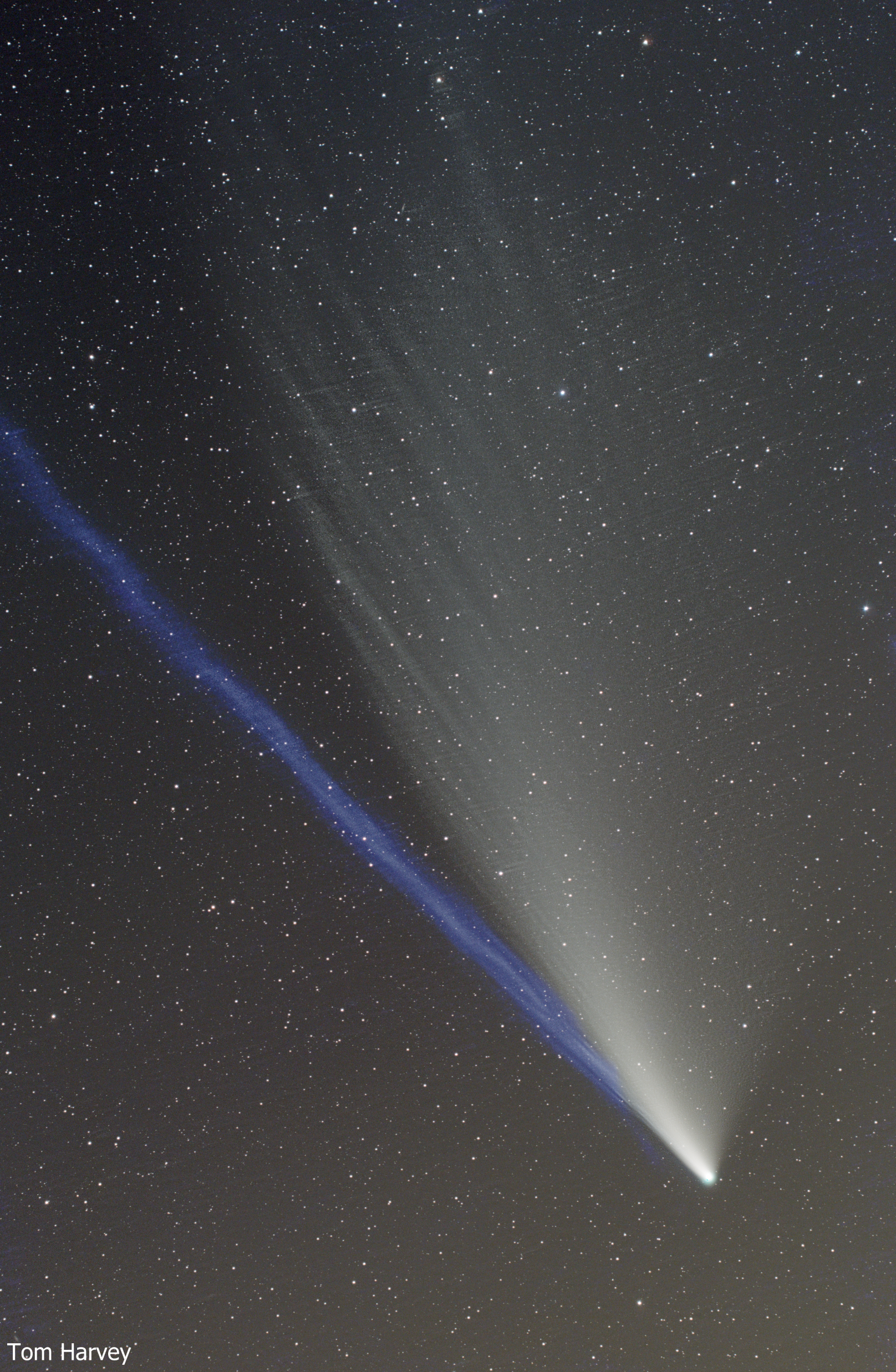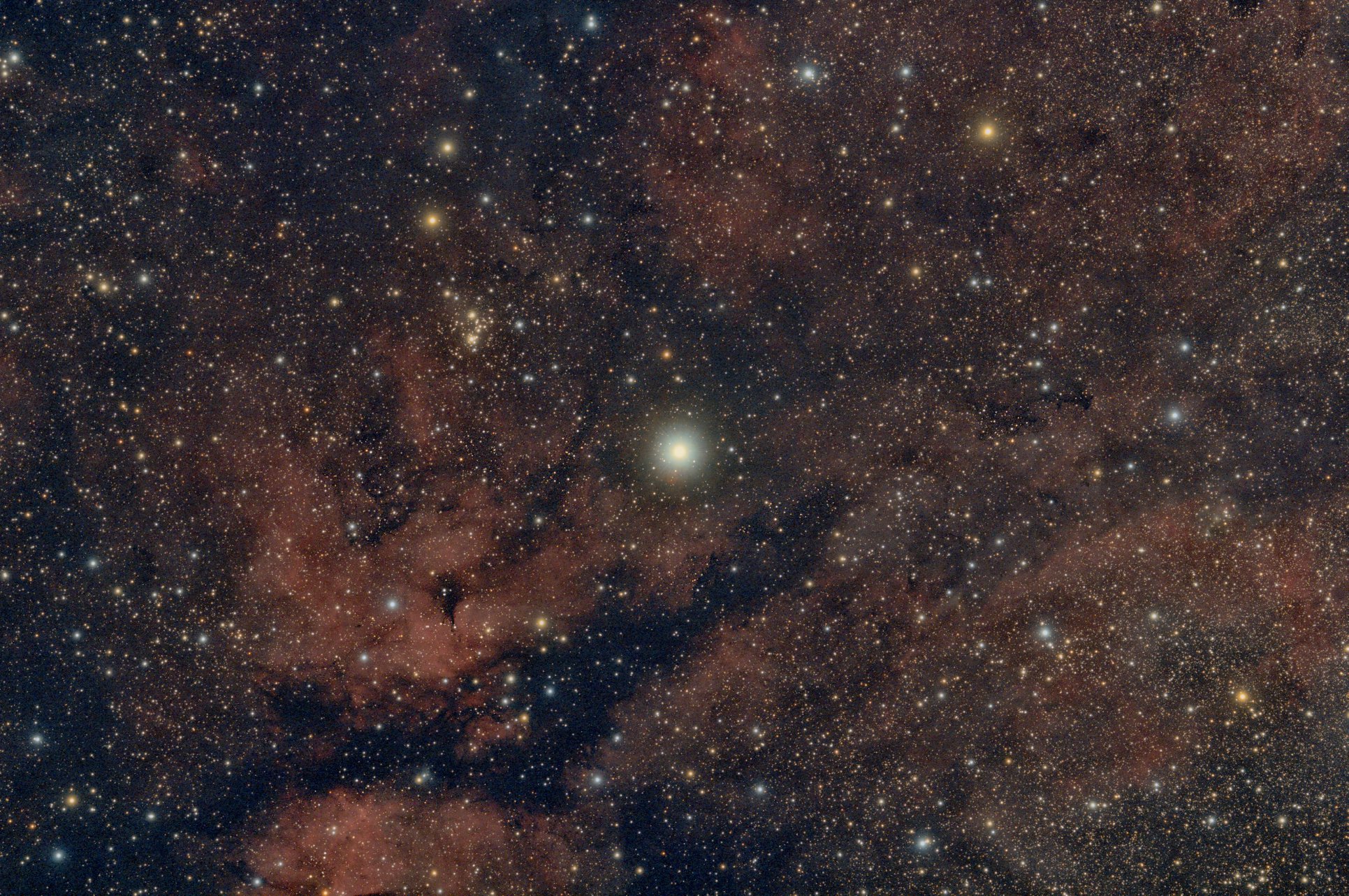Cool Stuff
Astrophotography
I’m a keen amateur astrophotgrapher, and I enjoy photographing deep sky objects like galaxies and nebulae. My current setup consists of a William Optics Redcat 51 telescope, a ZWO ASI 533MC-PRO camera, mounted on a iOptron CEM25-EC mount. Most of the processing is done in Pixinsight.
You can find a non-exhaustive collection of some images I’ve created, or collected the data for. Where indicated the editing was done by other people, including Jean Dean and Anthony Nel.
Comet Neowise, August 2020

Comet Neowise was my first oppurtunity to photograph a comet that was visible to the naked eye. This photo was taken using a Canon 1100D and a 100mm f2.8 prime lens, mounted to a CEM25 mount. It is the sum of 29 150 second exposures, with the stars including from half of them. Due to the differeing motion of the comet and the background stars, the comet and the stars were seperated and processed seperately before being recombined.
Comets and lumps of ice and rocks left over from the formation of the solar system. They spent most of their time out beyond the orbits of the planets, in the Kuiper Belt and beyond, but their highly eccentric orbits sometimes bring them into the inner solar system. The heat from the Sun sublimates gas from the surface of the comet, creating tails which can stretch for a million miles! You can see 2 tails here, the blue straight one is the ion tail, which is made up of charged gas that are accelerated by the Sun’s magnetic field and always points away from the Sun. The curved dust tail is made up of dust from the coma, which is the large “atmosphere” surrounding the comet due to the sublimation of the gas.
Heart Nebula, Sept 2019

This image of the Heart Nebula consists of 14 400s exposures, using a Canon 60Da and a Skywatcher Esprit 80ED with field flattener. The first one is edited by yours truly, and the second is the same data edited by Jean Dean, a more experienced astrophotographer and editor. You can see the difference practice makes in this hobby, and how much inidivudal style can come into it.
The Heart Nebula is an emission nebula, which simply means it is a cloud of gas that emits its own light! Some nebulae are instead reflection nebulae, which as the name suggests reflect light from another source such as a nearby star. Dark Nebulae are only seen by their outline blocking light from stars behind them. Some of the darker regions of the Heart Nebula are actually dust lanes where dust is obscuring the light.
The Heart Nebula is driven by the cluster of bright stars at the center, which contains stars more than 50x the mass of the Sun! The Heart Nbulae is around 7500ly away, in the constellation Cassiopeia.

Andromeda Galaxy, August 2019
 The Andromeda Galaxy is our nearest large galaxy, and in many ways is similar to our own Milky Way galaxy. They are both spiral galaxies, consisting of a flat disk of stars made up of several arms, and a central concentration of stars called a bulge. Many, like the Milky Way, also have a bar extending from the bulge to the spiral arms. Andromeda is actually larger than our galaxy, containing maybe as many as 1 trillion stars, and in a few billion years will actually collide with our galaxy!
The Andromeda Galaxy is our nearest large galaxy, and in many ways is similar to our own Milky Way galaxy. They are both spiral galaxies, consisting of a flat disk of stars made up of several arms, and a central concentration of stars called a bulge. Many, like the Milky Way, also have a bar extending from the bulge to the spiral arms. Andromeda is actually larger than our galaxy, containing maybe as many as 1 trillion stars, and in a few billion years will actually collide with our galaxy!
This photo was taken by me and Anthony Nel, using a Skywatcher HEQ5 and Esprit 80ED telescope and consists of 19 120s images combined.
Sadir Regionm Sept 2019

The star Sadir is at the center of the image, framed by complex nebulosity and dust lanes of the Milky Way. Sadir is part of the Cygnus-X molecular cloud which is part of a much larger molecular cloud complex. Cygnus-X is one of the richest known regions of star formation in the Galaxy and it contains as many as 800 distinct H II regions, a number of Wolf-Rayet and O3 stars and several OB associations. This has been processed to be true to colour, so the Ha is a subdued red color. It consits of 14 frames of 300s stacked together, using a Canon 60Da and a Skywatcher Esprit 80ED. Data collected by me and processed by Jean Dean.
Solar Activity, June 2020

This was taken with a Lunt, tilt and tune 60mm diameter solar scope which has a Ha filter. The camera was a ZWO ASI178 mono planetary camera. It was stacked in Autostakkert 3 and finished off in Photoshop. Processed by Jean Dean. A sunspot group and filament from the Sun is shown, as well as the granulation of the surface.
M13 Globular Cluster
 M13 is a globular cluster, which is a very dense spherical collection of old stars that all formed around the same time. There are many globular clusters in the Milky Way.
M13 is a globular cluster, which is a very dense spherical collection of old stars that all formed around the same time. There are many globular clusters in the Milky Way.
